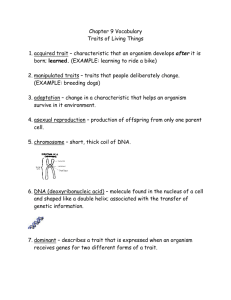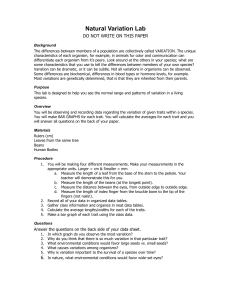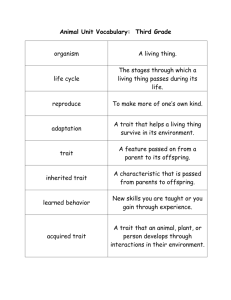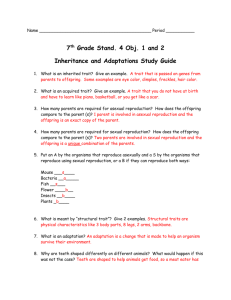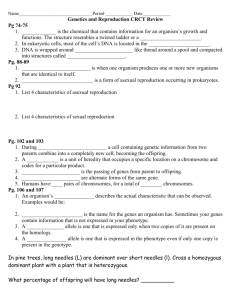Science study guide for Ch
advertisement
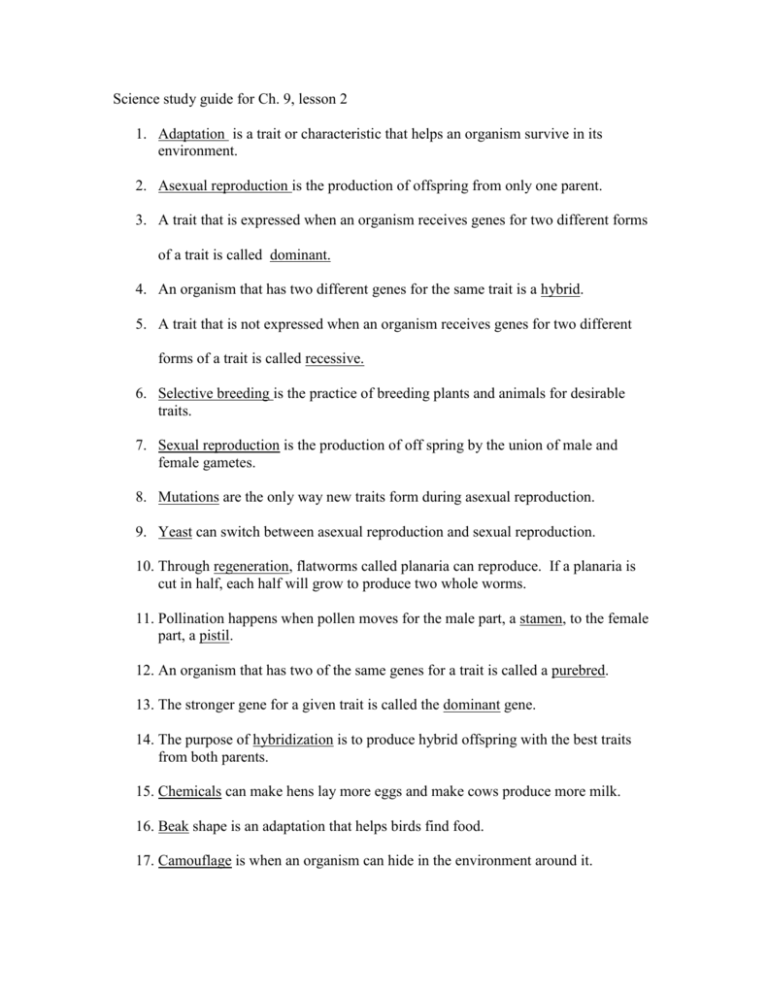
Science study guide for Ch. 9, lesson 2 1. Adaptation is a trait or characteristic that helps an organism survive in its environment. 2. Asexual reproduction is the production of offspring from only one parent. 3. A trait that is expressed when an organism receives genes for two different forms of a trait is called dominant. 4. An organism that has two different genes for the same trait is a hybrid. 5. A trait that is not expressed when an organism receives genes for two different forms of a trait is called recessive. 6. Selective breeding is the practice of breeding plants and animals for desirable traits. 7. Sexual reproduction is the production of off spring by the union of male and female gametes. 8. Mutations are the only way new traits form during asexual reproduction. 9. Yeast can switch between asexual reproduction and sexual reproduction. 10. Through regeneration, flatworms called planaria can reproduce. If a planaria is cut in half, each half will grow to produce two whole worms. 11. Pollination happens when pollen moves for the male part, a stamen, to the female part, a pistil. 12. An organism that has two of the same genes for a trait is called a purebred. 13. The stronger gene for a given trait is called the dominant gene. 14. The purpose of hybridization is to produce hybrid offspring with the best traits from both parents. 15. Chemicals can make hens lay more eggs and make cows produce more milk. 16. Beak shape is an adaptation that helps birds find food. 17. Camouflage is when an organism can hide in the environment around it. 18. When an organism looks like another organism, it is called mimicry. 19. Bright colors often mean that an organism is poisonous. 20. Two kinds of selective breeding are hybridization and inbreeding.

